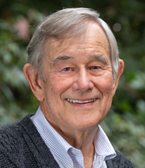In an important new report, America Achieves tells us that middle-class students in the United States are trailing their peers abroad. U.S. students were significantly outperformed by peers in 24 countries in math, if one looks only at those who fall just above the median position on its index of social and educational “advantage.” Among those who fall just below the index median, U.S. students ranked 32nd.
The America Achieves study reveals in an alternate way an international achievement gap that my colleagues and I have been identifying over the past three years (see “Teaching Math to the Talented,” features, Winter 2011; “Are U.S. Students Ready to Compete?” features, Fall 2011; “Is the U.S. Catching Up?” features, Fall 2012). In those papers, we report that the most talented U.S. students dreadfully lag peers abroad in math, that the percentage of U.S. students who are proficient is seriously lagging, and that the rate of improvement in the United States is no better than average. We develop the implications in a book the Brookings Institution will release this summer under the title Endangering Prosperity: A Global View of the American School.
Both our studies and the one America Achieves has just released rely on the Program for International Assessment (PISA), a series of surveys of student achievement in math, science, and reading administered to 15-year-olds in most countries of the industrialized world. America Achieves’ contribution is to group students by social and educational “advantage” into four quarters, using an index based on such items as a poverty indicator, educational environment at home, and quality of peer group at school. The organization then focuses its analysis on students in the second and third quarter—those just above and below the median student. By this device, analysts can discover whether the education problem in the United States disappears if one ignores, statistically, the most disadvantaged students.
America Achieves has not chosen the perfect analytical strategy. For one thing, it assumes the distribution of social advantage is identical in all countries, when it can hardly be the case that the same percentage of Swiss and Dutch children are socially disadvantaged as children in Poland and Hungary. A direct measure of family social background would be better than one that mixes in such factors as books in the home and the quality of peers at school. These educational considerations cannot be called “social” without twisting words out of their ordinary meaning.
But the study is solid enough to embarrass the group of teachers union leaders and liberal academics that calls itself the Broader, Bolder Approach to school reform (see “Neither Broad Nor Bold,” check the facts, Summer 2012). According to this influential group, the way to fix education in America is to eliminate poverty in America. If Broader, Bolder’s analysis were correct, then students who are not in the lowest quarter of the social spectrum should be doing just as well as similarly situated peers abroad.
That simply is not happening, as the America Achieves study demonstrates. Even if we ignore disadvantaged students both in the United States and abroad, U.S. performance ranks low in both math and science, and, to a lesser extent, in reading.
Also embarrassed by the America Achieves study is the lefty labor Economic Policy Institute in Washington, D.C., which recently released a sophomoric study (see my January 16, 2013, post on the Education Next blog) that tried to use the PISA data to attribute educational deficiencies to the U.S. social structure, not its school system.
The America Achieves results show that there is only one way to alter the international achievement gap in education: fix how students are learning. That suggestion sounds like a truism. It would be, were it not for the organized forces that insist on disputing the obvious.
— Paul E. Peterson
